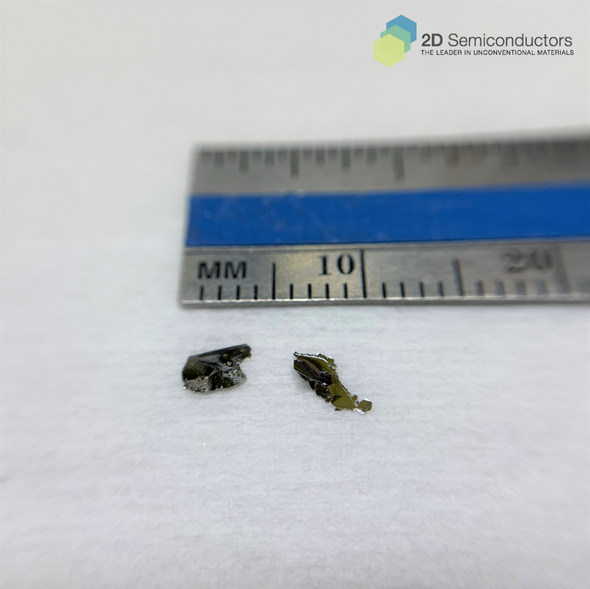Description
Copper silicon phoshide CuSi2P3 crystals belong to the group I-IV2-V3 compounds wherein some of the common examples include CuGe2Ps and CuSi2P3. In particular, CuSi2P3 crystals exhibit layered vdW structure with easy exfoliation characteristics. Depiste their layered nature, their basic fundamental properties still remain unknown. They have been predicted to be 2D metals and semimetals when they are heated thermally or by laser or they are known to convert to SiP layered phase. More fundamental studies are absolutely needed to establish their electronic, magnetic, and optical properties.
The properties of CuSi2P3 vdW crystals
| Sample size | ~3-5 mm in size (couple pieces) |
| Material properties | 2D metal and semimetal |
| Crystal structure | monoclinic phasea |
| Unit cell parameters | a= 0.368 nm b=0.739 nm, c=1.635 nm, α=48.1°; β=55.965°, γ=60.54° |
| Production method | Chemical vapor transport 99.9995% purity |
| Characterization methods | SIMS, XRD, EDS, Raman |
Additional Information
Elements: |
Cu,Si,P |
Element: |
Copper |
Element: |
Silicon |
Element: |
Phosphorus |
Formula: |
CuSi2P3 |
Material class: |
MX |
Properties: |
Metal |
Properties: |
Semimetal |
Growth method: |
CVT |
Doping: |
Undoped |









